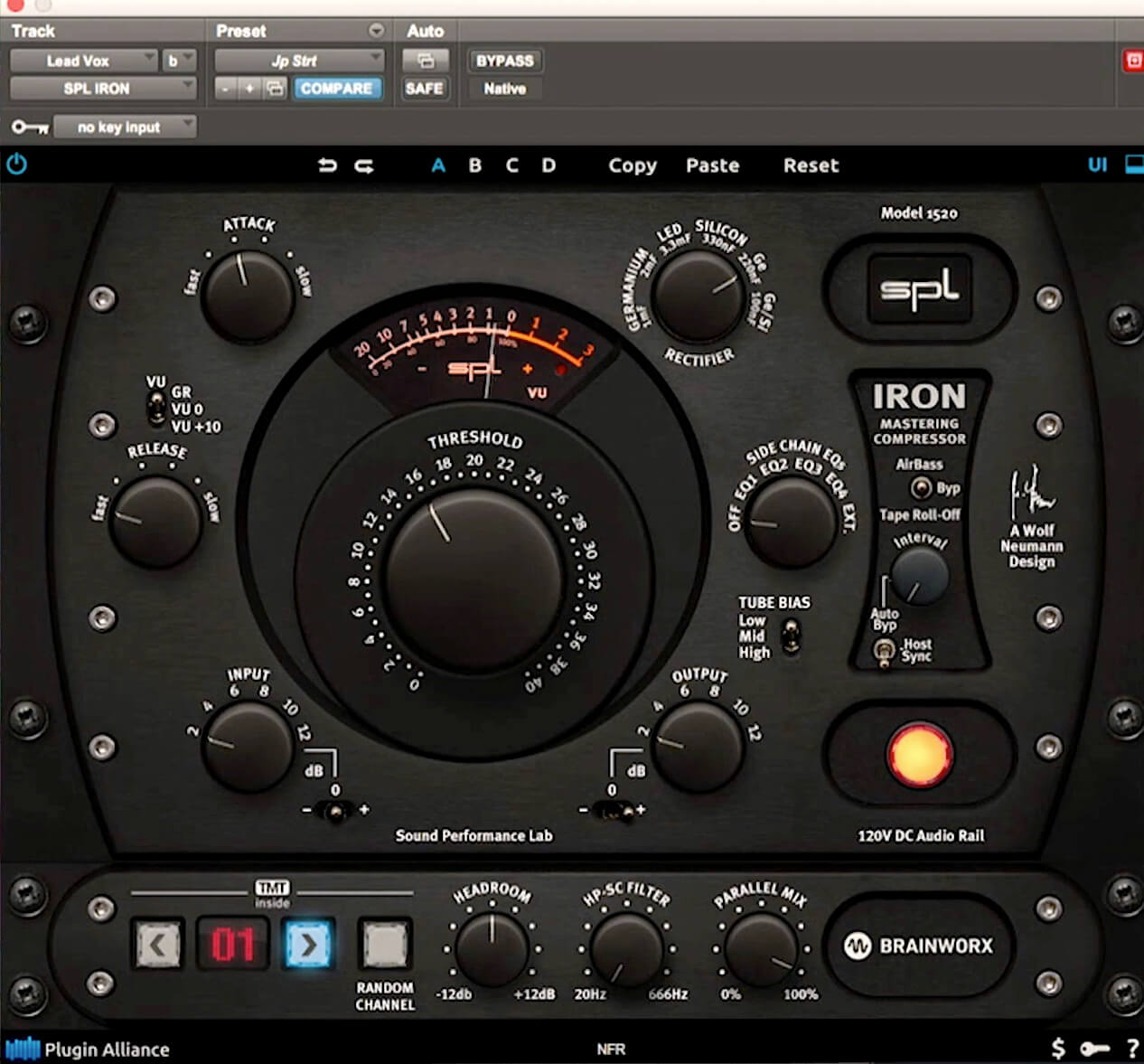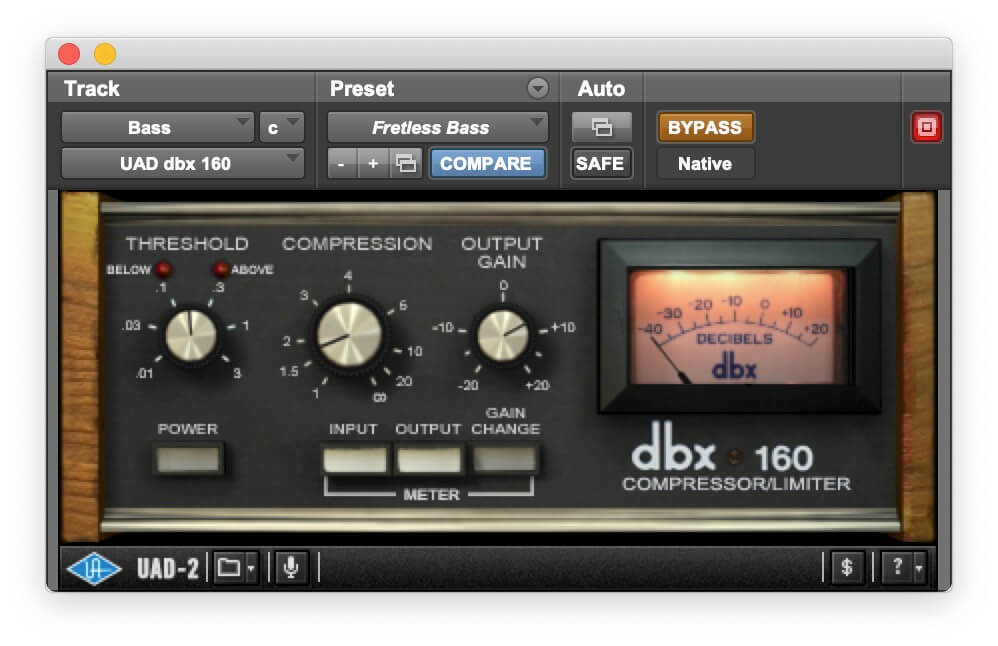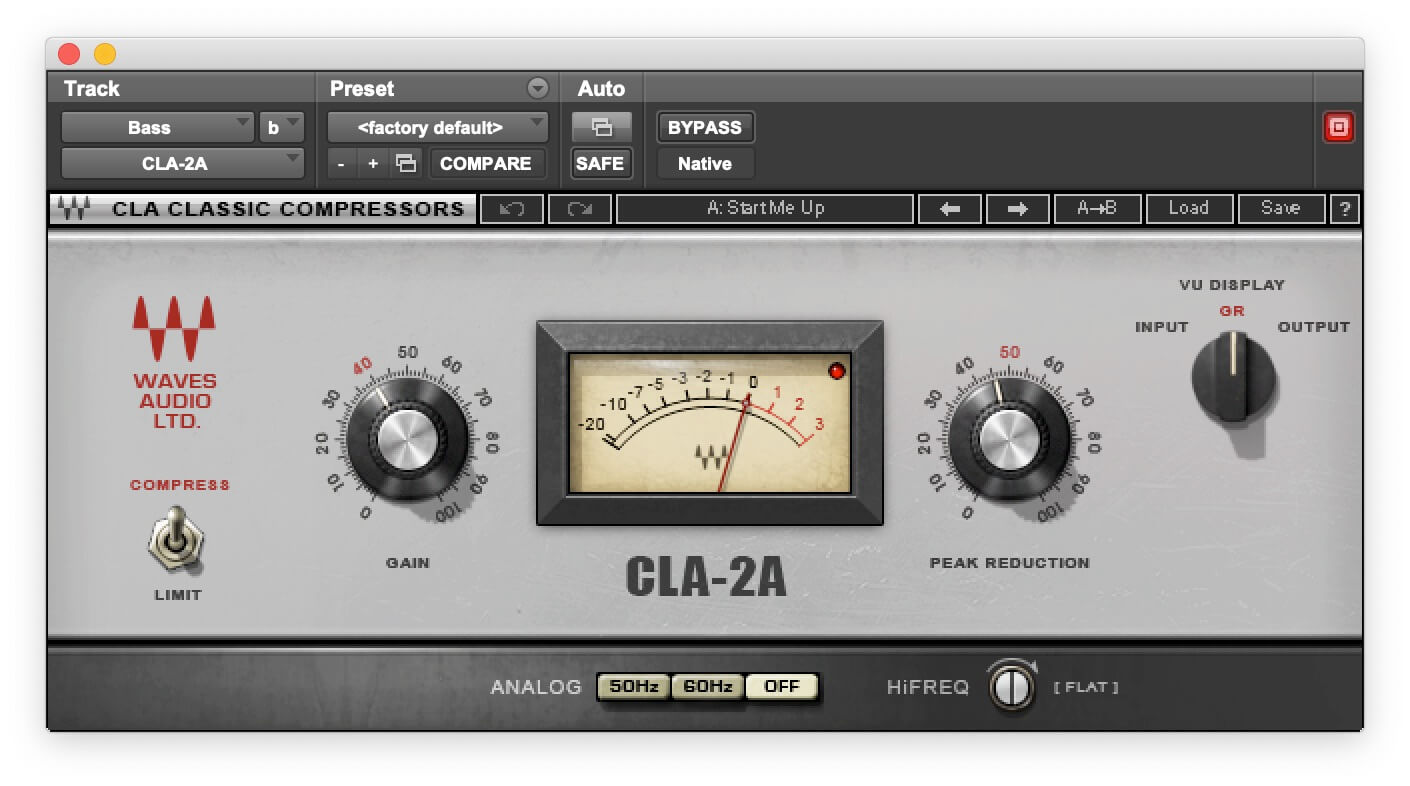Even when compressors are of the same general type (VCA, FET, opto, etc.), different brands and models often don't sound alike. The same is true for plug-ins that closely emulate their circuitry. In this excerpt from "John Paterno Mixing Lifeboats," Paterno is working on the lead vocal track, and trying to decide on a compressor to use.
DECISIONS, DECISIONS
He's narrowed his choice between two plug-ins that emulate variable-mu compressors, which are tube-based units. First, he tries a Fairchild 660 (the mono version of the Fairchild 670). He says he wants a variable-mu compressor because they sound thicker and have a relatively fast response. He will also try an SPL IRON Mastering Compressor plug-in to see what it sounds like.
He says the SPL is also a variable-mu compressor but sounds more modern. It offers variable-mu type operation, combined with SPL's 120V Technology. According to SPL, the latter helps provide better dynamic range, signal-to-noise ratio and distortion specs when used in hardware processors. The plug-in's circuitry emulates that performance.
Paterno gets ready to compare them both on the vocal track. He looks for a spot where the vocals have a lot of level. One can assume that's because more level means that more signal will exceed the compressor threshold, giving him more opportunity to hear the compressor doing its thing. He settles on the second half of the second verse and begins by auditioning it with the SPL IRON.
He sets the release fast, the attack somewhere in the middle, the Rectifier to GE and the Tube BIAS to Low. He says he likes how it's "grabbing" (reacting to the incoming vocal signal) and the constant presence it adds to the vocal.

Paterno's setting on the SPL IRON plug-in
Next, he tries the UA Fairchild 660 Legacy plug-in. He spends some time adjusting the controls as he listens. He ends up with the Threshold at about 7.5 and the Time Constant set to 2.
In the comparison, he says, he's listening for how each compressor is affecting the tone of the vocal. "Is it pinching it, is it making it sound bigger?" he asks. By pinching, he means it is squeezing it in a way that makes it sound thinner or smaller.

Paterno's setting on the UAD Fairchild 660
He says that any kind of audio component will impart a tone on a signal, and he's making the comparison to figure out which of the two plug-ins work better with the vocal.
After comparing both, he decides that, at least for now, he likes how the SPL sounds better. He thought the Fairchild accentuated the midrange too much, whereas the SPL provided a smoothness, he says it has a little more "chest" to it.
THE COLOR OF COMPRESSION
When making a decision about a compressor, both of the hardware and plug-in variety, you should let your ears decide what's best, as Paterno did. That said, you can often narrow down which type of compressor you want to use, assuming you have several choices, by understanding how each type behaves, generically speaking.
The four main types of hardware compressor designs are VCA (Voltage Controlled Amplifier), FET (Field Effect Transistor), optical (aka "opto") and variable-mu. Each uses a different method to detect and attenuate the incoming audio and reacts differently to an incoming signal. Emulative plug-ins aim to digitally replicate the circuitry, so their behavior will be consistent with whatever type of compressor is being modeled.
CONTROL THAT VOLTAGE
VCA-based units are probably the most common type of hardware compressor and also the most versatile. The critical component is a voltage-controlled amplifier, which attenuates based on a control signal split off from the incoming audio, which can be altered with parameters like threshold, ratio, attack, release and so forth before going into the detector circuit.

The UAD emulation of one of the best known VCA compressors, the dbx 160.
VCA compressors have fast reaction times and so can handle drums, percussion and other transient-heavy sources. They also work great on a wide range of instruments and on vocals.
Some of the "classic" VCA compressors are the dbx 160, the SSL G-Series Bus Compressors, the API 2500.
FIELD EFFECT OF DREAMS
FET stands for Field Effect Transistor. These compressors featured solid state circuitry that was designed to emulate the performance of tube compressors. FET compressors offer the fastest reaction time and are therefore particularly useful on drums and percussion as well as electric basses and guitars. FET compressors have no Threshold control, so the incoming signal triggers the attenuation. The higher the input is set, the more of the signal gets compressed.
You don't want to choose a FET compressor if you're looking for transparency, it's likely to color your signal no matter how you set it.

The UAD 1176 plug-in emulates the classic FET hardware compressor.
The UREI 1176, of which there are many plug-in emulations, is by far the best-known FET compressor. Some other notable hardware units are the Chandler Limited Germanium Compressor and the Drawmer 1973 Multi-Band. There isn't yet a software version of the Chandler, but Softube makes a Drawmer 1973 plug-in.
SEE THE LIGHT
An optical compressor uses an entirely different type of detection circuit. It splits a control signal off from the incoming audio and turns it into light, which is then picked up by an electrical-optical sensor, which triggers the attenuation.
The Teletronix LA-2A (which also has a tube amplifier stage) and LA-3A (which has a solid-state amplifier stage) are probably the two most iconic optical compressors. LA doesn't refer to the city but is an acronym for Leveling Amplifier. The Tube Tech CL 1B is another classic opto compressor.

The Waves CLA-2A models the Teletronix LA-2A, an opto compressor with a tube amplification stage and a unique tone.
Because of their unique detection circuits, opto compressors are a little slower to attenuate a signal than other types, so they aren't as good for transient control. However, they produce a very smooth and warm tone, which is great on vocals and a wide range of instruments.
MU-TUBE
The fourth compressor type is the one Paterno used in the video, the variable-mu. It features a tube circuit that changes its biasing based on the incoming signal to create attenuation. Such compressors are pretty versatile, able to create both smooth and heavily crushed results.
As we saw from the video, the Fairchild 660 (and its stereo sibling the 670) is such a compressor. Hardware versions of the Fairchild units are rare and incredibly expensive. They have a reputation for making any audio sound good.
You may have noticed an unusual control on the UAD Fairchild plug-in called DC Threshold. This replicates controls of the same name on the original hardware, which simultaneously adjusts the compression ratio and the knee parameter. The latter determines the speed at which a compressor acts on a signal that's over the threshold. In other words, it controls whether it ramps up to its full attenuation or goes there immediately.
The Manley Variable-Mu is another classic unit, and the UAD emulation of it is excellent. The original SPL IRON is a hardware mastering compressor. It was released in 2015 and offers a contemporary take on variable-mu circuitry. Paterno used SPL's plug-in version of it in the video.
DIFFERENT FLAVORS
In the following examples, we'll compare the sound of four compressor emulations, representing those four basic compressor types, on bass and on drums. The four plug-ins used are the Waves CLA-2A (opto), the Waves PuigChild 660 and 670 (variable-mu), the UAD UA 1176 Rev A (FET), and the UAD dbx 160 (VCA). Settings were made to enhance the bass or drums in the best way for each compressor.
Don't consider this as a shootout, just as a way to listen to the various compressor plug-ins' impact on the sound.
The different versions of Example 1 feature a DI precision bass going through a UAD Ampeg B-15 bass amp modeling plug-in.
Example 1a: Bass with no compression
Example 1b: Bass with Waves CLA-2A
Example 1c: Bass with UAD dbx 160
Example 1d: Bass with UAD UA 1176 REV A
Example 1e: Bass with Waves PuigChild 670
The different versions of Example 2 feature drums from Toontrack Superior Drummer 2. Pay particular attention to how the various compressors affect the snare drum.
Example 2a: Drums with no compression
Example 2b: Drums with Waves CLA-2A
Example 2c: Drums with UAD dbx 160
Example 2d: Drums with UAD UA 1176 REV A
Example 2e: Drums with Waves PuigChild 670